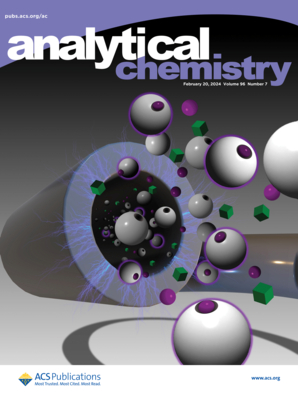通过综合方法揭示高糖基化促红细胞生成素药物的精确位点特异性N和o糖基化。
IF 6.7
1区 化学
Q1 CHEMISTRY, ANALYTICAL
引用次数: 0
摘要
具有高唾液酸含量的高糖基化蛋白在开发长效生物治疗药物方面具有很大的前景。然而,它们的结构复杂性和异质性对传统的分析方法构成了重大挑战,传统的分析方法往往不能提供所有糖基化位点的全面聚糖信息,导致表征的模糊性。尽管长效高糖基化促红细胞生成素(hyperEPO)在市场上已有20多年的历史,但由于糖基化位点间隔很近,且含有不稳定的唾液酸取代基的大聚糖,其位点特异性糖基化谱仍然不明确。在这里,以hyperEPO为例,我们开发了一个集成的工作流程,包括实验交叉验证的聚糖数据库、优化的非特异性消化和简化的糖肽衍生化方法,以增强唾液化肽的检测,从而实现N-和o -糖基化的综合位点特异性表征。我们应用这一策略来比较商业化的高epo药物达贝诗汀和一种新的高效类似物EPO-XL的糖基化谱。我们发现,这两种蛋白都表现出高位点占用率、大的四唾液化聚糖和相似类型的唾液酸键,但在位点特异性糖型分布上有显著差异。值得注意的是,EPO-XL在所有5个n -糖基化位点都含有广泛的LacNAc结构,并且在S120位点和典型的S126位点发现了一个以前未报道的o -糖基化位点。总的来说,本研究提出了超epo蛋白的第一个位点特异性N-和O-糖基化谱,为这些治疗方法的质量控制和合理设计提供了有价值的指导。这里介绍的最先进的分析策略在推进具有复杂糖基化的蛋白质的位点特异性糖基化表征方面具有很大的潜力。本文章由计算机程序翻译,如有差异,请以英文原文为准。
Unveiling the Accurate Site-Specific N- and O-Glycosylation of Hyperglycosylated Erythropoietin Drugs by an Integrated Approach.
Hyperglycosylated proteins with a high sialic acid content show great promise in the development of long-acting biotherapeutics. However, their structural complexity and heterogeneity pose significant challenges to traditional analytical methods, which often fail to provide comprehensive glycan information across all glycosylation sites, leading to ambiguities in characterization. Despite the fact that long-acting hyperglycosylated erythropoietin (hyperEPO) has been available on the market for over two decades, its site-specific glycosylation profile remains ambiguous due to closely spaced glycosylation sites and large glycans that contain labile sialic acids substituents. Here, using hyperEPO as an example, we developed an integrated workflow that incorporates an experimentally cross-validated glycan database, optimized nonspecific digestion, and a streamlined glycopeptide derivatization method to enhance sialylated peptide detection, enabling comprehensive site-specific characterization of both N- and O-glycosylation. We applied this strategy to compare the glycosylation profiles of the commercial hyperEPO drug darbepoetin alfa and a novel high-potency analogue, EPO-XL. We found that both proteins exhibited high site occupancy, large tetra-sialylated glycans, and similar types of sialic acid linkages but differed markedly in site-specific glycoform distributions. Notably, EPO-XL contained extensive LacNAc structures at all five N-glycosylation sites, and a previously unreported O-glycosylation site at S120 was identified alongside the canonical S126 site. Collectively, this study presents the first site-specific N- and O- glycosylation profiles of hyperEPO proteins, offering valuable guidance for the quality control and rational design of these therapeutics. The state-of-the-art analytical strategy introduced here holds great potential to advance the site-specific glycosylation characterization of proteins with complex glycosylation.
求助全文
通过发布文献求助,成功后即可免费获取论文全文。
去求助
来源期刊

Analytical Chemistry
化学-分析化学
CiteScore
12.10
自引率
12.20%
发文量
1949
审稿时长
1.4 months
期刊介绍:
Analytical Chemistry, a peer-reviewed research journal, focuses on disseminating new and original knowledge across all branches of analytical chemistry. Fundamental articles may explore general principles of chemical measurement science and need not directly address existing or potential analytical methodology. They can be entirely theoretical or report experimental results. Contributions may cover various phases of analytical operations, including sampling, bioanalysis, electrochemistry, mass spectrometry, microscale and nanoscale systems, environmental analysis, separations, spectroscopy, chemical reactions and selectivity, instrumentation, imaging, surface analysis, and data processing. Papers discussing known analytical methods should present a significant, original application of the method, a notable improvement, or results on an important analyte.
 求助内容:
求助内容: 应助结果提醒方式:
应助结果提醒方式:


